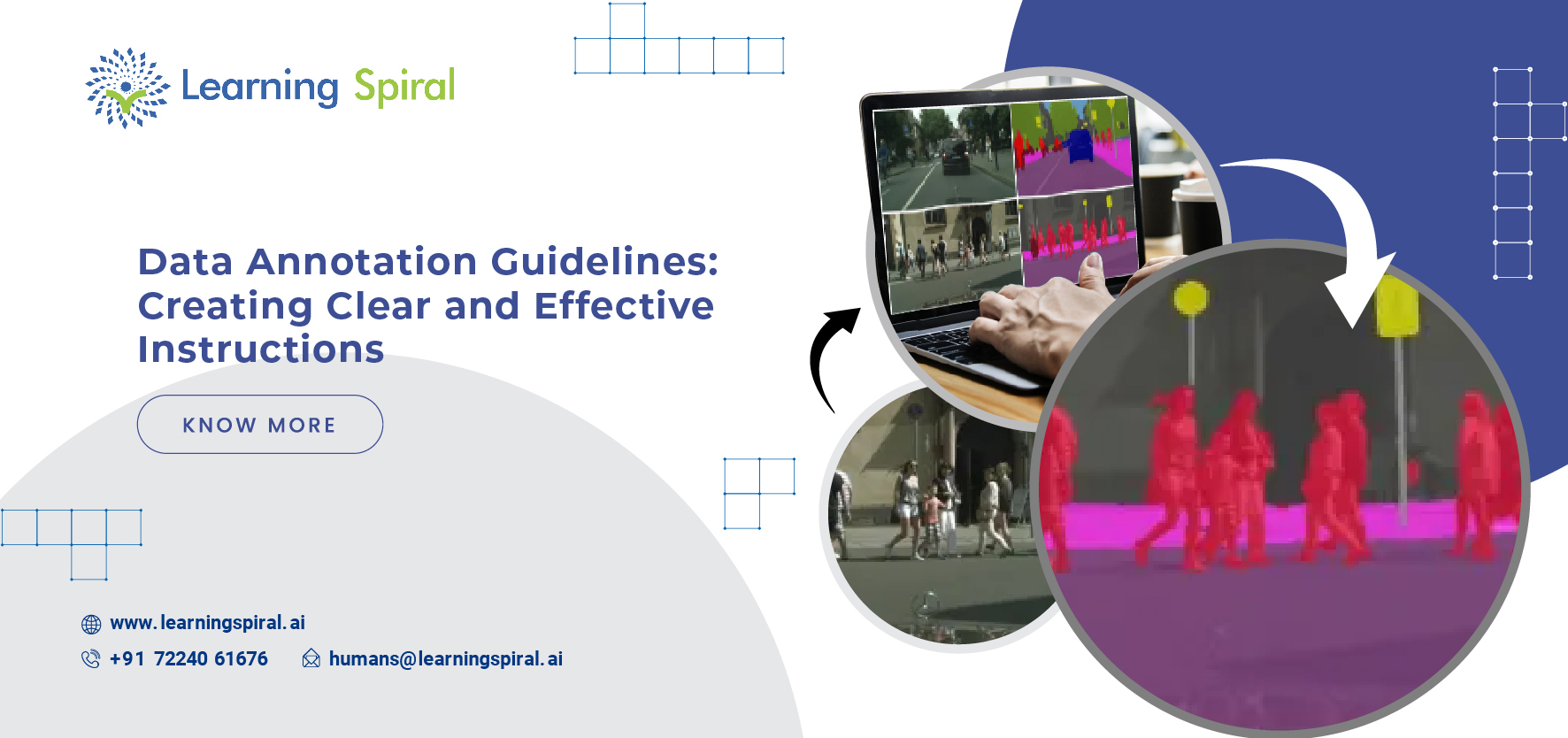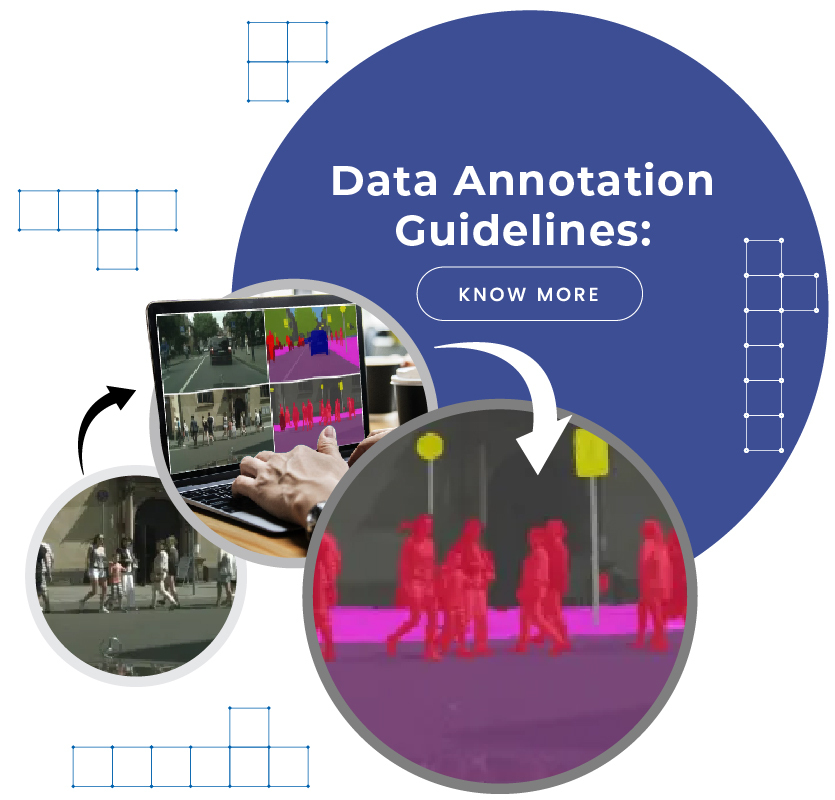
Data annotation is a critical component of training machine learning models. The quality of annotated data directly impacts the performance of AI models. To ensure high-quality annotations, it is essential to provide clear and effective annotation guidelines to annotators (human and otherwise).
Let’s see what the key principles for creating annotation guidelines are:
- Clear Objective:
Clearly define the objectives of the annotation task. Explain what the final labeled data will be used for and what you aim to achieve. This not only gives annotators context but also helps them understand the importance of accuracy and consistency.
- Decide the Scheme for Annotation:
Decide on the annotation scheme that will be used. Whether it’s bounding boxes, text labels, or something else, make it explicit. Define the categories and attributes annotators need to label. Ensure that you choose a scheme that fits the specific task.

- Provide Examples:
Include a variety of clear and diverse examples that demonstrate correct and incorrect annotations. These examples serve as reference points for annotators and help illustrate the guidelines in practice. Visual aids, like images or videos, can be especially beneficial.
- Establish Must Follow Rules:
Specify the rules annotators should follow when they encounter uncertain or challenging cases. Decision trees or flowcharts can be particularly helpful in guiding annotators through complex situations. This will also prevent any biases or silly mistakes from occurring.
- Maintain Consistency:
Consistency is crucial in data annotation. Clearly state conventions for naming, capitalization, units, and other factors that may affect consistency. Ensure that your guidelines help annotators provide uniform labels across the dataset. The rules for consistency may differ based on projects, so establish the needed grounds before beginning a new task.
- Frequent Meetings for Better Communication:
Establish a channel for annotators to ask questions or seek clarifications. Regular feedback and communication can help resolve issues and keep annotators engaged and motivated. Set a fixed timeline for meetings at the beginning, middle, and end of every project. This way, any mistakes could be avoided without starting from scrap.
- Quality Assurance and Iteration:
Implement a quality control process to review and validate annotations. This feedback loop allows you to identify and correct issues in the guidelines. As the annotation process progresses, be prepared to update and refine the guidelines based on insights gained from the data.
In conclusion, creating clear and effective annotation guidelines is a fundamental step in the data annotation process. It not only ensures the accuracy and consistency of labeled data but also enhances the productivity and motivation of the annotation team.
Clear communication, context, and feedback are the pillars of successful data annotation, and well-crafted guidelines are the cornerstone of this process. By following the principles outlined in this article, you can improve the quality of your annotated data and, in turn, the performance of your machine-learning models.

